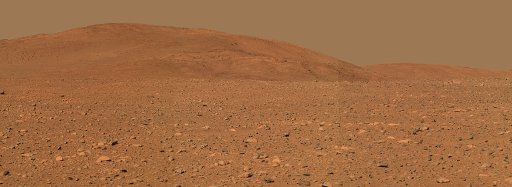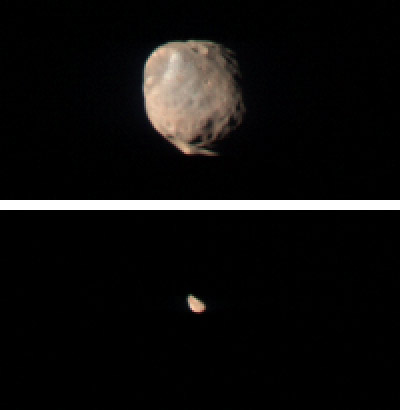Introduction
Being one of the few planets observed from the surface of Earth, Mars has been studied and questioned for centuries. Through recent discoveries, we have started to look at the question of whether there is life on Mars. Before 1965, when a planet flyby took place under Mariner 4, people thought the dark spots on Mars could be vegetation, and that water might exist on the polar caps. Many were surprised that this was not the case. Though Mars is a fairly dead planet now, that does not mean there are no mysteries of its past.

Size & Scale
Mars is about half the size of Earth. The full surface area of Mars only 28% of Earth's full surface area, but it is about the same as the land surface area on Earth. Mars is located about 1.5 times farther from the sun than Earth is. A day on Mars is equal to 1.026 Earth days, or 24.623 hours. It’s almost the same as Earth, but because of the slightly farther location, Mars has a slightly longer day, and a year about twice as long.

Environment/Terrain
Throughout its lifetime, Mars’ surface has been impacted through volcanoes, craters, crustal movement, dust storms, and other atmospheric destruction.
Similar to Earth, Mars has seasons due to the tilt of its axis. The polar ice caps on Mars grow and recede depending on the season. There were once, about 3 billion years ago, active volcanoes on the surface of Mars. Olympus Mons is the largest volcano in the solar system and is located on our neighboring red planet. Valles Marineris is an equatorial canyon that is also located on the surface of Mars.
Mars does not have a global magnetic field right now. However, there are areas on the surface that have been highly magnetized, which is partially due to a magnetic field from about 4 billion years ago that has since died away.
Although there is no water on Mars today, scientists do believe that Mars once experienced floods about 3.5 billion years ago. Nobody knows where the flood water came from, how long it was there, or where it went, but in 2002, the Odyssey mission discovered hydrogen-rich polar deposits with large quantities of ice near the surface. Opportunity in 2004 discovered minerals and structures showing that water once existed at the landing site. Spirit, Opportunity’s twin, also found indications of ancient water at its landing site on the opposite side of the planet.
Mars’ temperature ranges from about -153 to 20 degrees Celsius, or -225 to 70 degrees Fahrenheit. Due to the cold temperatures and lack of a thick atmosphere, liquid water on Mars almost instantly dissipates.

Orbiting Bodies
Mars has two known orbiting bodies, Phobos and Deimos, discovered in 1877 by Asaph Hall. Both are small, asteroid-like satellites with little gravitational force, giving them each a distinct potato-like shape. Phobos, the innermost moon, has a diameter of about 13.6 miles. Deimos, the smaller moon, has a diameter of only about 7.7 miles. Phobos’ surface is heavily cratered and filled with grooves caused by impacts throughout its life. Both moons are named after the mythical horses that carried the chariot of Mars, the Roman god, with Phobos meaning "fear" and Deimos meaning "panic."

History
The month of March got its name from Mars. The Romans named Mars after Ares, their god of war, because the planet's red color reminded them of blood. The Egyptians also had a similar naming scheme, naming Mars “Her Desher,” translating to “the red one.”
Due to the fact that Mars is easily spotted with the naked eye, it is unsure who first spotted Mars. In 1659, however, Christian Huygens saw the Syrtis Major on the surface of Mars and from then on was convinced that there was life on Mars. In 1877, the astronomer Giovanni Schiaparelli found lines on the surface of Mars that crossed over each other. He believed them to be water canals made by intelligent life on Mars; however, they were simply the wind curvatures on the planet. Also in 1877, the astronomer Asaph Hall discovered Mars’ two moons.

Missions
In 1965, Mariner 4 became the first spacecraft to visit Mars, producing the first up-close images of another planet in space. In 1976, the Viking 1 and 2 landed on the surface of Mars, producing ample amounts of information regarding weather patterns and rock samples. Also in 1976, Mars 2 was the first spacecraft to land on Mars, sent to land on the polar ice caps and dig for liquid water. In 1997, Mars Pathfinder landed and sent out Sojourner, the first wheeled rover to explore another planet in our solar system. In 2002, Mars Odyssey began its mission to make observations and find water beneath the surface. Twin rovers Spirit and Opportunity landed on Mars and found evidence that Mars once had liquid water on the surface in 2004. In 2006, Mars Reconnaissance Orbiter captured and returned high-resolution images of the planet while observing seasonal changes. In 2008, Phoenix landed on Mars and discovered signs of possible habitability from the occasional presence of liquid water and good soil chemistry.
Many missions are currently in progress, or on extended missions, including Mars Odyssey, Mars Express, the Exploration Rovers (Spirit and Opportunity), and the Reconnaissance Orbiter. On December 5, 2014, the Orion spacecraft completed its first test flight. Orion is the Mars mission meant to bring the first humans to the surface of Mars. In 2011, Curiosity was launched, and landed in 2012. Ever since, it has been sending back extensive data regarding possible past water and life on Mars. MAVEN was launched in late 2013, and reached orbit in 2014, where it will continue to obtain atmospheric data to determine the history of Mars.
Purdue Connections
Purdue has had some connections with Mars throughout history. Eugene A. Cernan has been working with the design of the Mars Outpost for the last 17 years. Janice Voss, the inspiration of the entire VOSS project, aided in the mission of the Mars Observer in Fall 1992.